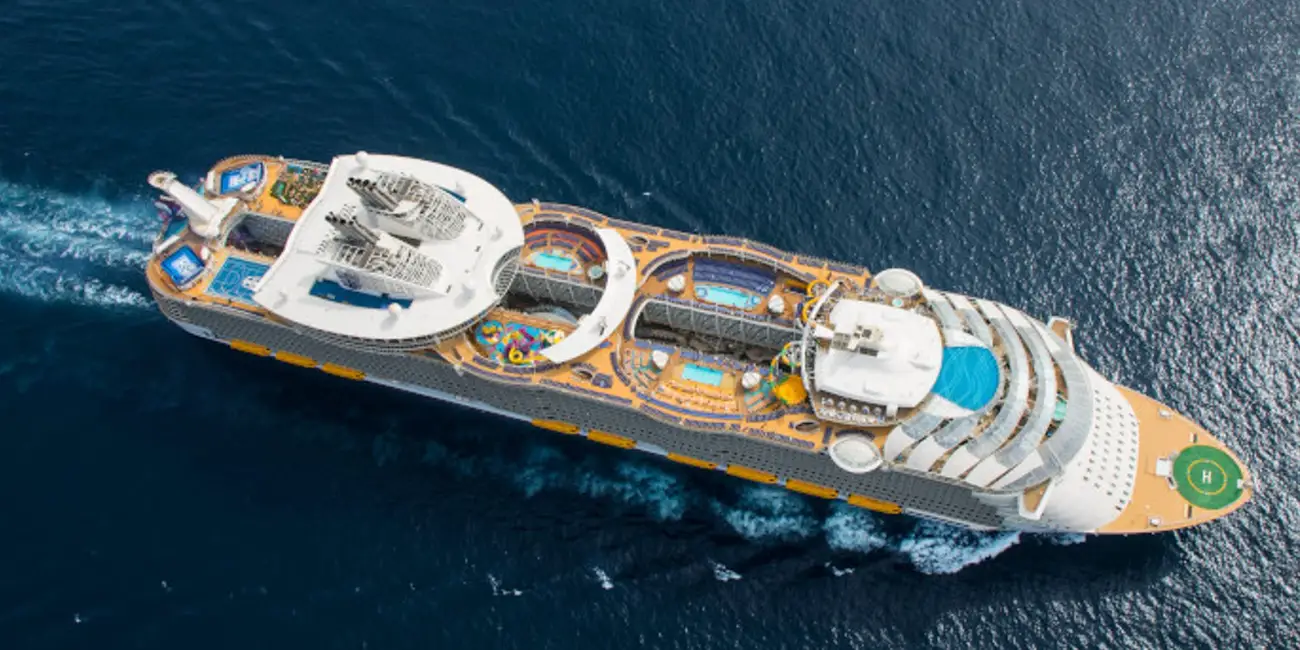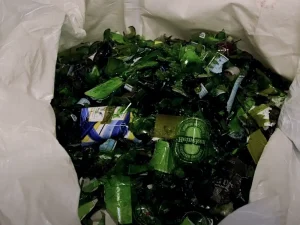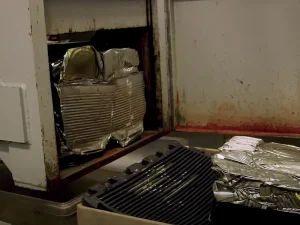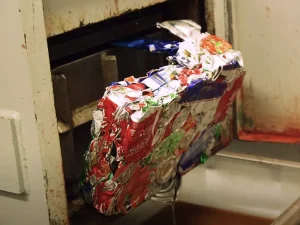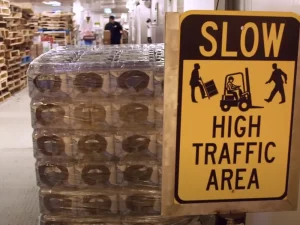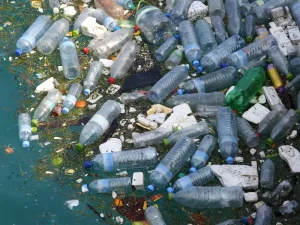The cruise ship industry has undergone remarkable transformations over the past few decades. From the introduction of mega-liners capable of carrying thousands of passengers to adopting cutting-edge technologies aimed at improving efficiency and sustainability, the sector has continually evolved to meet shifting consumer demands and regulatory requirements. Today, the industry faces a dual challenge: delivering unparalleled luxury and experiences while minimizing environmental impact. This article delves into the major innovations, operational efficiencies, environmental challenges, and future trends shaping the cruise ship industry.
The global cruise industry thrives in key markets and along popular routes that cater to diverse traveler preferences. The Caribbean remains the most dominant cruise destination, attracting millions annually with its idyllic islands and tropical allure. The Mediterranean is another leading market, offering rich cultural experiences and historic port cities like Barcelona, Rome, and Athens. In recent years, Alaskan and Northern European cruises, featuring fjords and breathtaking natural landscapes, have also gained popularity. Additionally, Asia-Pacific routes, including Southeast Asia and Australia, are emerging as significant markets, driven by growing demand from Chinese and Indian travelers. These routes highlight the industry’s focus on combining luxury with cultural and scenic exploration.
Innovations in Cruise Ship Construction
Modern cruise ships are marvels of engineering, combining luxury with state-of-the-art technology. One of the most prominent trends in recent years has been the development of mega-ships. Royal Caribbean’s Symphony of the Seas, for instance, is a 228,081-gross-ton vessel capable of accommodating over 6,600 passengers and 2,200 crew members. These ships are equipped with features such as smart cabins that allow guests to control lighting, temperature, and entertainment systems through their smartphones.
Shipbuilders are increasingly incorporating green technologies into new builds to meet stringent environmental regulations. Advanced hull designs like the X-Bow, initially pioneered by Ulstein Group, improve fuel efficiency by reducing resistance. Lightweight materials, such as composite panels, are also gaining traction, decreasing overall weight and enhancing fuel economy. Furthermore, cruise lines are investing in hybrid propulsion systems. For example, Hurtigruten’s MS Roald Amundsen became the world’s first hybrid-powered expedition ship, reducing fuel consumption and emissions through battery technology.
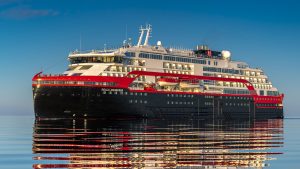
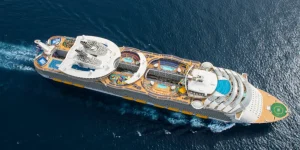
–
Operational Efficiency
Advanced Energy Management Systems
Operational efficiency is critical to the cruise industry’s profitability and sustainability. Modern cruise ships rely on Energy Management Systems (EMS) to optimize fuel usage and reduce operational costs. These systems analyze real-time data from the ship’s machinery, propulsion systems, and environmental sensors, providing actionable insights for crew members. For instance, Carnival Corporation’s Fleet Operations Centers use advanced analytics to monitor the performance of their entire fleet, enabling precise energy-saving measures. Such innovations have reduced fuel consumption by approximately 5% fleet-wide.
Cold Ironing and ShoreSide Electricity(SSE)
To reduce emissions while docked, many cruise ships are adopting cold ironing technology, also known as shore power. This system allows ships to turn off their engines and connect to a port’s electrical grid. Ports like those in Vancouver, Seattle, and Los Angeles have invested heavily in shore power infrastructure, enabling cruise ships to cut emissions significantly during port stays.
–
Environmental Challenges
Waste Management at Sea
– Types of Waste Generated:
- Sewage (Black Water): Cruise ships generate vast amounts of sewage, also known as black water, from toilets and medical facilities. Untreated discharge can harm marine ecosystems, leading to nutrient pollution and oxygen depletion in water bodies. To address this, modern cruise ships are equipped with advanced sewage treatment plants (STPs) that use biological, chemical, and physical processes to treat wastewater. These systems ensure that the discharged effluent meets or exceeds international environmental standards.
- Gray Water: Gray water, which comes from showers, sinks, galleys, and laundries, constitutes the largest portion of liquid waste generated onboard. Although less hazardous than black water, it still contains detergents, food particles, and grease, which can harm marine life. Advanced filtration and treatment systems are now used to remove contaminants before discharge. Some ships recycle treated gray water for non-potable uses, such as washing decks or laundry.
- Solid Waste: Solid waste includes plastics, paper, glass, metals, and food waste generated from dining, onboard activities, and packaging materials. Improper disposal of this waste can lead to marine pollution and threaten wildlife. Cruise ships are implementing rigorous waste segregation practices, separating recyclable materials from non-recyclables to minimize waste sent to landfills.
– Technological Solutions for Waste Management
- Vacuum Collection Systems: Vacuum collection systems are now standard on most cruise ships. These systems efficiently collect sewage and gray water using minimal water, reducing overall waste volume.
- Bio-Digesters and Food Waste Processors: Food waste is often processed using bio-digesters, which break down organic material into harmless by-products such as water and carbon dioxide. This reduces the need for storage and minimizes the risk of food waste being dumped overboard.
- Incinerators: Incinerators are used for non-recyclable waste, such as contaminated paper and certain plastics. While incineration reduces waste volume, advanced systems ensure emissions are controlled to prevent air pollution.
- Compactors and Balers: For recyclables such as plastics, paper, and aluminum, compactors and balers are used to compress materials into smaller volumes for storage and eventual recycling onshore.
- Advanced Treatment Plants: Cruise ships are increasingly outfitted with advanced wastewater treatment systems. These systems use multiple filtration and chemical treatment stages to purify wastewater to levels that exceed environmental regulations.
– Compliance with International Regulations
- MARPOL Annex IV and V: Annex IV of the International Convention for the Prevention of Pollution from Ships (MARPOL) regulates sewage discharge, requiring ships to treat or store sewage before discharge. Annex V prohibits the discharge of plastics and other harmful materials into the ocean. Cruise ships must adhere to these regulations, which mandate the use of certified treatment systems and strict monitoring of discharge practices.
- Port Reception Facilities : Cruise ships are required to use port reception facilities for the disposal of certain types of waste, such as hazardous materials and recyclables. Ports in environmentally sensitive areas often have stringent requirements to ensure proper handling and processing of waste.
– Challenges and Future Innovations
Challenges and future innovations in waste management at sea present several critical aspects for consideration. One significant challenge is the limited space available onboard cruise ships. Waste management systems require substantial room, which can be difficult to accommodate given the constraints of ship design. Engineers are continuously innovating to create compact and efficient solutions that optimize waste processing capabilities without compromising other essential functionalities. Another concern is the energy consumption of waste treatment technologies. Many of these systems consume significant amounts of energy, contributing to the ship’s overall carbon footprint. To address this, future designs are focusing on developing energy-efficient technologies that reduce resource consumption while maintaining effectiveness. Digital monitoring and automation are also playing a transformative role in waste management. Advanced systems now integrate real-time monitoring tools that provide accurate data on waste generation and treatment processes. Automated systems not only improve efficiency but also help minimize human error and ensure compliance with international regulations. In short challenges can be summarised:
- Space Limitations
- Energy Consumption
- Digital Monitoring and Automation
In conclusion, waste management at sea has become a critical focus for the cruise industry as it strives to balance luxury travel with environmental responsibility. By implementing advanced technologies, adhering to stringent regulations, and adopting sustainable practices, cruise ships are making significant progress in reducing their environmental impact and safeguarding marine ecosystems. However, ongoing innovation and collaboration between industry stakeholders and regulatory bodies are essential to achieve long-term sustainability in maritime operations.
Carbon Emissions and Fuel Transition
The cruise industry faces mounting pressure to address its environmental impact, particularly carbon emissions. Traditionally reliant on heavy fuel oil (HFO), a significant polluter, cruise lines are now exploring cleaner alternatives. Liquefied Natural Gas (LNG) has emerged as a viable interim solution. For example, AIDAnova, operated by AIDA Cruises, is one of the first LNG-powered cruise ships, offering a reduction in sulfur oxide and particulate matter emissions. Cruise ships are essentially floating cities, and like any city, they generate a significant amount of waste. Proper waste management at sea is critical to minimizing the environmental impact of these vessels and ensuring compliance with international regulations. Here’s a detailed look at the key aspects of waste management on cruise ships:
Compliance with International Regulations
The International Maritime Organization (IMO) has introduced stringent regulations under MARPOL Annex VI to control sulfur emissions. The IMO 2020 regulation, which mandates a global sulfur cap of 0.50%, has pushed cruise lines to adopt exhaust gas cleaning systems (scrubbers) or transition to low-sulfur fuels. These measures, while effective, have increased operational costs significantly.

–
Future Trends
Sustainability in the Cruise Industry
The future of the cruise industry is inextricably linked to sustainability. Companies are investing in alternative fuels like hydrogen and ammonia, which promise zero carbon emissions when paired with advanced fuel cells. MSC Cruises’ World Europa, for instance, features a hydrogen-ready design, signaling the industry’s shift towards renewable energy solutions.
Smart Ships and Digital Transformation
Smart ships equipped with the Internet of Things (IoT) are revolutionizing operations. Sensors monitor engine performance, detect maintenance needs, and optimize navigation routes to reduce fuel consumption. Norwegian Cruise Line’s Prima Class features digital twin technology, enabling operators to simulate and optimize ship performance before implementation.
Personalized Guest Experiences
Cruise lines are leveraging artificial intelligence (AI) to deliver personalized guest experiences. Princess Cruises’ OceanMedallion technology uses wearable devices to track passenger preferences, streamline boarding processes, and offer customized itineraries.
Expansion into Emerging Markets
Emerging markets such as Asia and South America are becoming focal points for growth. With rising disposable incomes and a growing middle class, these regions present untapped potential for the industry. Companies like Costa Cruises are designing ships specifically for these markets, featuring tailored entertainment and dining options.
The cruise ship industry stands at a crossroads, balancing the need for innovation and luxury with the imperative of sustainability. From adopting green technologies and alternative fuels to enhancing operational efficiency through advanced systems, the industry is rising to meet these challenges. However, significant work remains to align with global environmental goals fully. As consumer preferences evolve and regulatory landscapes tighten, the industry’s ability to innovate will determine its future trajectory. With continued investment in technology, sustainability, and guest experience, the cruise ship industry can navigate its way towards a greener, more efficient future.
By prioritizing cruise ship innovations, embracing green technologies in maritime, and committing to sustainability in the cruise industry, this dynamic sector has the potential to set a benchmark for other maritime operations.

